Atlantus
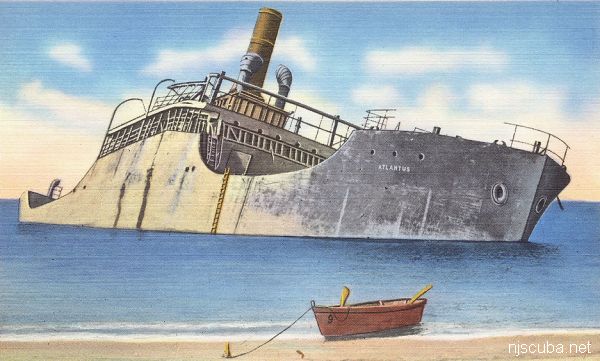
- Type:
- shipwreck, freighter, USA
- Built:
- 1918, Liberty Shipbuilding, Brunswick GA USA
- Specs:
- ( 260 x 43 ft ) 2000 gross tons, no crew
- Sunk:
- Tuesday June 8, 1926
dragged anchor and grounded in storm while awaiting final disposition - Depth:
- 25 ft
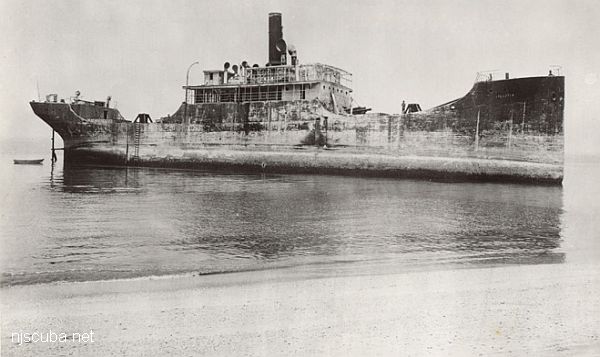
Atlantus was one of a class of experimental concrete ships built during World War I. The hull was constructed of reinforced concrete rather than steel, which had become scarce during the war. While this design offered a number of advantages, including lower noise and vibration, and a dryer cargo space, it was not economically competitive with steel hulls when peacetime resumed.
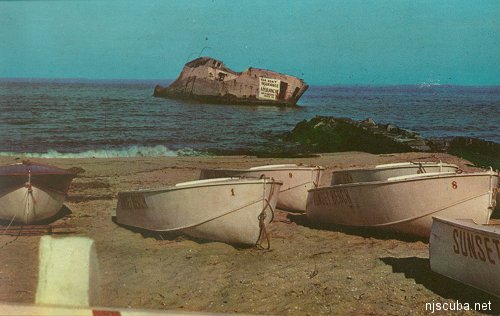
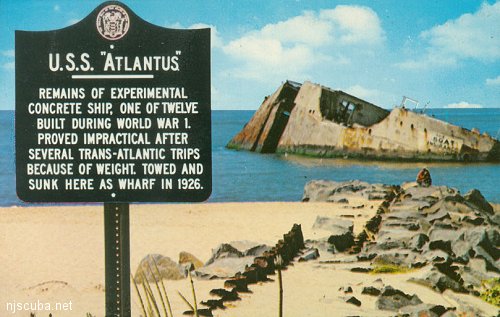
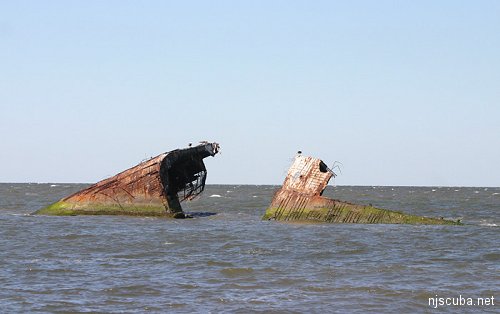
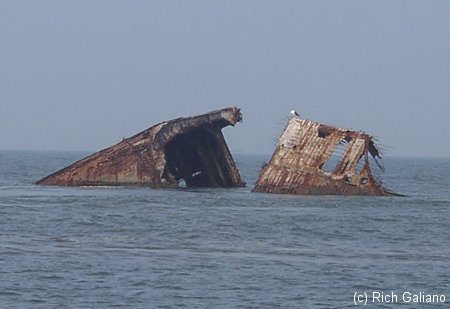
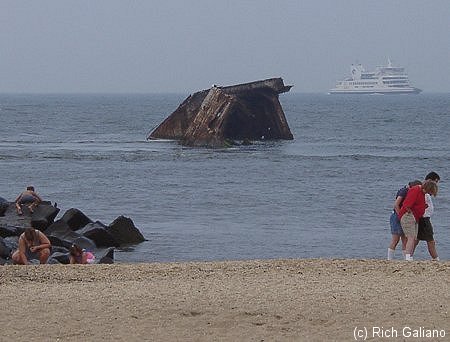
The Cape May - Lewes Ferry is crossing in the distance, while people on the beach look for "Cape May diamonds" - pretty quartz stones found on the beach. I wouldn't dive this spot, but it's a nice place to stop for lunch. The Cape May lighthouse and the ferry terminal are a short drive away.

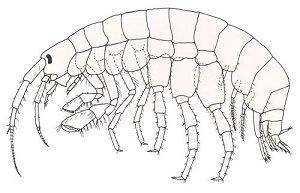
Questions or Inquiries?
Just want to say Hello? Sign the .